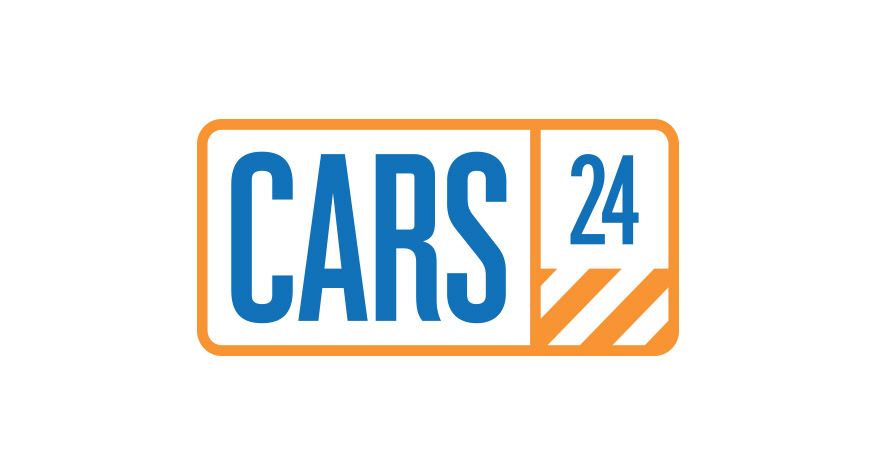New Trends in Learning Management Systems (LMS)

The impact of COVID-19 on the education industry has resulted in creating major changes in the way education is delivered. During the pandemic, there were no other options available for education. This increased the use of Learning Management Systems by institutions and organizations.
With the use of LMS, it became a lot easier for everyone to gain knowledge and education without leaving home. The LMS industry has also risen rapidly because of the ease of access to education via the internet. The LMS market is expected to grow up to USD 44.49 Billion at a CAGR of 18.7% in 2028.
These days LMS companies are integrating different approaches and trends of teaching and training to increase the effectiveness of the content deliverable. With these new trends, the effectiveness of training and courses through LMS has increased immensely making it an alternative to classroom learning and training.
What is Learning Management System? (LMS)
A Learning Management System (LMS) is software used by organizations and institutions to develop, deliver, and track the training performance of the users. With easy to reach internet companies and institutions started using LMS for the learners to make the courses and training easy to access from everywhere.

With LMS the organizations and institutions don’t have to worry about the users attending lectures and training in the classroom.
When LMS is implemented it makes it a lot easier for the organizations and institutions to manage the course and training easily. With the integration of various features and learning techniques to increase the effectiveness of the training LMS became quite popular in the education industry.
An LMS usually consists of two parts to deliver the training effectively. The parts are:
- Admin Interface- This interface allows the admin to manage the learning programs. Admin can perform different tasks through this interface like creating, managing, delivering courses, adding learners, analyzing reports, automating notifications, etc.
- User Interface- This interface delivers the course to learners, usually can be run on browsers or mobile apps (depending on the LMS). A learner through this interface can easily continue his learning from anywhere with access to the internet.
Trends in LMS in 2022
The increase in number of users of LMS is rising rapidly. This increase in the number of users has made the LMS companies adapt modern learning techniques and trends to make the courses and training more effective.
With the use of Gamification, Microlearning, Simulation Learning, etc. the process of learning has been more effective as compared to the LMS of the past days. Present days LMS can do a lot more than just deliver and track the e-learning content.
Some new trends integrated by LMS companies to improve the learning and effectiveness of the learners are listed below:
Gamification
Gamification is usually associated with young learners who face difficulty in focusing and understanding the concepts. Gamification is a process of making the learning more interactive and competitive for the learner resulting in higher concentration and understanding.

As institutions and organizations started using LMS regularly, it was found that the effectiveness and understanding of the course were diminishing due to a lack of concentration and motivation. As this problem was a major one for the organizations and institutions, LMS companies came up with the solution of gamifying the learning modules.
After integrating game-based learning or gamification by providing certain badges and rewards based on the learner’s progress. It was found that the learners were much more motivated and focused on the course.
According to LMS companies, game-based learning will continue to grow because of the need to make courses much more effective and engaging for the learners.
Microlearning
Microlearning is a process of breaking down a course into small modules to make it easier for the learner to learn with effectiveness and understanding. Microlearning is not considered a new trend in the education industry.

As the learner’s started preferring mobile devices for learning, it was found that the effectiveness and engagement of the learner were way less in lengthy courses as compared to the short courses.
Course creators realized that short courses have much more engagement and effectiveness because of the perspective of the learner’s mind to achieve a reward quickly. This made LMS companies start focusing on microlearning.
Apart from the increase in effectiveness and engagement of the course, there are many other benefits that a course creator can enjoy with microlearning. Some of the benefits are listed below:
- It helps instructors to deliver the course in a much more structured way for step by step learning.
- Higher completion rate.
- Can be used as on-the-go training.
- With the integration of microlearning with LMS, it becomes easier for the learner to access the course from anywhere.
- Cost-Effective as compared to lengthy courses with low completion rates.
- Utilizes high impact training methods in the form of videos, presentations to increase engagement.
Learning Simulation
Learning simulation is not a new concept in the learning and development industry. It is used widely by institutions and organizations to prepare trainees, students and newly hired staff before the hands-on training. Learning simulation provides the learner with simulated scenarios like in real life in a controlled environment to prepare the learner for the job.

Learning Simulation is more of an advanced version of learning as compared to traditional methods. Research has shown that simulations have helped organizations and institutions in achieving effectiveness and engagement of the training.
Simulations are considered to be more cost-effective in terms of face to face roleplaying. The real-life roleplaying scenarios have been replaced by different simulation training methods such as virtual activities, online scripts and job simulators. They also provide instructors with proper insights and data to track the learning progress of the learner and determine on that basis whether the learner is ready for the actual responsibilities or not.
Interactivity
Traditional methods of training and learning were found to be less engaging and enjoyable for the learner as the focus was mainly on the teacher. The problem was solved by integrating interactivity in the Learning Management System. It was found that when the learners had a chance to interact more with the trainer, assignments and study materials the engagement with the course was highly increased making the learning process more enjoyable and retaining.

Interactivity mainly focuses on increasing the learner’s engagement with the course. There are plenty of ways that LMS companies have integrated to increase the interactivity of their training and courses. It lets the learner participate more in the learning process by clearing doubts, quizzes, assignments and sharing understanding about the course material
There’s no doubt that interactive learning stimulates engagement of the learner with the course and is beneficial in almost every education, vocational and corporate training.
Community
Trainers have always faced the problem of knowledge retention as many online learners lose interest in the course and don’t even complete it. This problem introduced community as a solution to make the course material easy to retain for the learners.

The statistics showed a sudden increase in course completion when the learner’s community was built. The community don’t just add in motivating and supporting the learner in this learning journey but also gives a learner the reason to continue the course. The type of community that needs to be built depends on the type, of course, it will be based on.
The proper community is designed by creating a hybrid version of broad groups to keep the interest in the course going and narrowed groups to make it easier for the learner to support subgroups and gain more insights. Communities can be built on online forums, social media or community building apps like Discord.
Subject Matter Experts
Subject matter experts are termed as experts in their fields having good experience practising the field. Many organizations and institutions have already tried to let subject matter experts take sessions of learners to give them insights about the job, scope, industry and responsibilities.

The problem that arises with subject matter experts is that undoubtedly they’re best in their chosen fields but there’s a possibility that they won’t be able to teach as efficiently as teachers.
Organizations and institutions solved this problem by appointing subject matter experts to design the training content and letting the trainers take care of the teaching. SMEs can be appointed to create and sort the learning content according to the organization’s needs.
It was also found that regular small interaction of the learner with subject matter experts to gain insights about the learning material, scope and best practices increased the motivation of a learner towards the training and course.
Accessibility
As the whole world got hit by COVID-19 everyone was facing lockdown staying at home. This made the education industry shut down as the use of eLearning wasn’t preferred much. But as the need arises as there was no face to face classes available. Organizations and institutions started using Learning Management Systems because of the ease of access from anywhere via the internet.

This feature of eLearning helped the organizations and institutions in letting the learners continue their studies and training while being at their house. Research has shown that with the increase in the use of online learning, many trends have been integrated into the learning management systems to make the learning of the learner more effective and efficient.
With these new trends, learners saw increased retention of information in a lesser time as compared to face to face sessions. As present days require a more accessible approach for learning rather than using face to face sessions, organizations and institutions do need to give LMS a try to make it easier for the learner to continue his/her learning.
AR/VR (Augmented Reality/ Virtual Reality)
Integration of Augmented Reality and Virtual Reality in the education industry has allowed trainers to understand and measure the progress of the learners. On that basis, they can take corrective measures to boost efficiency and effectiveness.

The main reason behind integrating AR/VR technology in learning management systems is that it has improved the performance of learning content. Making it much easier for the learner to understand the concepts easily.
With AR/VR learners have found an increase in understanding their strengths and weaknesses. By being aware of the same they can work on them to develop skills and retaining information easily. There are various benefits of using AR/VR with LMS, some of them are as follows:
- Puts end to tick box learning and note-taking
- Increases user engagement
- Simplifies complex topics
- Simulates experiences that one can face in real life
Adaptive Learning
In earlier days of online learning, the learning content was made according to the trainers. But with time it was found that every learner is performing differently when the same learning content was provided.

This introduced adaptive learning or targeted learning. Adaptive learning is an approach of providing personalized learning content tailored according to his learning and understanding pattern. As every human understands and retains information differently, adaptive learning makes it easy for every learner to learn according to their way of learning.
With the use of AI and Data Analytics, it became easier for the trainers to understand the learners more easily. Making it easier to tailor the learning content according to the learners.
By focusing more on learners LMS companies have started changing the education industry. With the integration of modern technologies, the learning process has become easier.
Benefits of using LMS
Nowadays Learning Management Systems plays an important role in the education industry. As more and more companies have started using LMS to provide training to their employees. There are many benefits of LMS that we can’t overlook, top benefits are as follows:
- Organizes the learning content in one place making it easier to manage and deliver the content to the learner.
- Trainers can easily track learners’ progress based on their engagement and performance in the course.
- LMS can reduce learning and development costs because of ease of access via the internet. Cutting off the costs of travel, classroom rent and print costs of learning material.
- The learning and development time can be reduced a lot by using LMS. It was seen that with the use of LMS it took less time for the learner to understand the concept.
These games were inspired by cabinet-style slot machines from the past american express online casinos and re-created using modern technology.



















